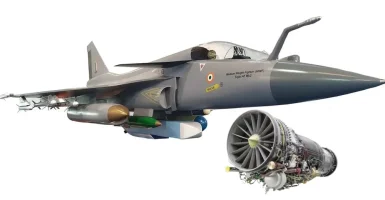- Views: 610
- Replies: 1

Recent reports from Russian television have confirmed that the second prototype of the Su-57, known as “052”, has embarked on a new phase of testing. This round of tests is particularly focused on evaluating a novel flat nozzle design, hinting at significant upgrades to the aircraft’s capabilities.
The flat nozzle, which has sparked considerable interest, was initially intended for the S-70 “Hunter” (Okhotnik) unmanned combat aerial vehicles (UCAVs). However, the prototype in question is the first instance where this technology is being adapted for use on a manned fighter jet. The exact purpose of these tests remains somewhat ambiguous, as the flat nozzle was not originally planned for the Su-57 but rather for the Hunter drones, which in their test phases were equipped with conventional nozzles.
The flat nozzle design bears similarity to those on the U.S. F-22 Raptor, where Pratt & Whitney F119 engines utilize controlled thrust vectoring to enhance maneuverability, particularly at lower speeds. This technology is known for reducing an aircraft’s radar cross-section and infrared signature, thereby improving stealth characteristics. The Su-57’s new nozzle might be aimed at achieving similar benefits, potentially enhancing its combat effectiveness in stealth operations.
There’s a noted history regarding this development. In 2021, it was announced that the Su-57 would incorporate a narrow nozzle from the first Hunter prototype. This past intention adds layers to the current testing scenario, leaving room for speculation on whether these tests are exploring this earlier idea or are part of a new developmental path.
The Russian aerospace industry is not stopping at nozzle innovation. There’s ongoing work on what’s referred to as the “Izdeliye 30” or the second-stage engine for the Su-57. This new engine is expected to dramatically boost the jet’s performance metrics, including speed, maneuverability, and stealth, by reducing its radar and thermal signatures.
Until now, both the prototypes and production models of the Su-57 have been equipped with the AL-41F1/S engine, the same as those in the Su-35 heavy fighters. This engine has served well but lacks the advanced stealth and performance capabilities that the new flat nozzle and the Izdeliye 30 engine promise to deliver.
The testing of the flat nozzle on the Su-57 prototype “052” is a clear indicator of Russia’s commitment to maintaining its edge in advanced fighter jet technology. If successful, this development could lead to a new variant of the Su-57 with enhanced stealth and agility, potentially positioning it as a formidable competitor in the global arena of fifth-generation fighters.



